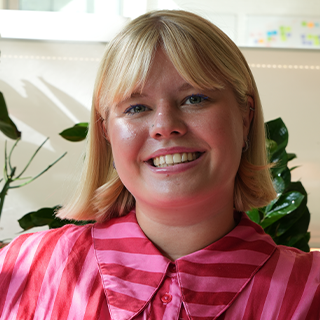The Candy Crush curse: Unpacking the iPad game phenomenon with three self-proclaimed addicts

iPad mums, everyone’s either got one, knows one, or has seen one on TV. They’re a pretty recognisable bunch, so if you spot one out in the wild, make sure to look out for these two very important identifiable things: a really old school iPad cover case which doubles up as a stand, and a seriously extensive portfolio which contains about a gazillion hours of gameplay on Candy Crush Saga.
Now, we’ve always known that iPad and mobile games are addictive, especially the kind which involve relatively straightforward problem solving and a plethora of levels to complete and conquer, but there’s definitely something special and unique about Candy Crush. A quick Google search for “Candy Crush addiction” and you’ll be quickly faced with a long list of articles detailing how this is indeed a very serious problem that needs to be addressed. There are even pages which list a number of “warning signs” to look out for if you’re concerned that you might know a CC addict.
According to the Observer, out of all of the apps of 2018 (including Tinder and YouTube) that require you to log in, three versions of Candy Crush made it to the top 10 list. That’s 30 per cent of the world’s 10 most-popular apps, beating out other popular games like Angry Birds and Pokémon GO. Candy Crush also brings in approximately $200 million in revenue each quarter.
While on the surface it might look like just a couple rows of candy canes, doughnuts and purple gumdrops, this is a multi-million dollar operation, and it’s not showing any signs of slowing down. It has a loyal fanbase of 250 million users and remains to be one of the most influential games of the past decade.
You might be curious as to why I’m so keen in delving deeper into this phenomenon. Well, as difficult as it is to admit, I myself have an iPad mum—I know, it’s rough. My very own flesh and blood has been addicted to this game since I was 14-years-old. From what I can remember, we were getting ready to go on holiday and my sister suggested to my mum that she download a game to play while on the plane. By the time we landed in Spain, she was hooked.
Since that fateful day in 2013, my mum has dedicated a lot of her time to Candy Crush. In total, across four versions of the game, she’s completed just over 18,008 levels. Yep, you read that correctly.
I sat down with Susan Sawyer, aka my mum of 24 years, to try and crack the code of why Candy Crush just does it for her more than any other form of relaxation or entertainment. First off, I asked her what first attracted her to CC, to which she mused: “You always want to get to the next level, it’s about beating the system. It’s that feeling of when you do the 10 consecutive games, and smash that run, it gives me a rush.” She also added “it’s the perfect amount of stimulation.”
Moving on, we spoke about how long she plays the game, on average. According to her, “it really depends on how long I have. I could play it for hours, but it also depends on how many lives I have.” In the game, if you lose all of your lives you either can purchase more or wait approximately thirty minutes to have it renewed. While some people would have no issue just buying the extra lives, mum’s never wanted the game to feel like gambling and so she’s never spent a penny on it.
Although, interestingly enough, according to the professional player herself, Candy Crush has begun to change its approach in regard to gaining new lives. Now, rather than wait 30 minutes or so, you simply need to sit through a three minute ad in order to obtain your lives. The ads can vary from Burger King to cosmetic surgery, although mum has noticed a big influx of “influencer marketing” advertisements recently.
Mum’s been tempted at times to move onto other games, expressing an interest in getting into some of the quintessential iPad wordplay games, but at the end of the day “[she] quickly forgets about those and just goes back to Candy Crush.”
This phenomenon is also in no way shape or form confined to my house. I recently spoke with two other CC addicts to try and find out a little bit more about how they first got attached to the infamous game. Sophie, mother of three, explained how she’d first gotten into the game six years ago after it was recommended to her. She’s currently sitting on level 4,821, manages to keep her sessions confined to only 20 minutes at a time, and cites her obsession with needing to get to the next level as her primary motivation to stick to it.
A definite recurring theme comes across when speaking to these CC-lovers, the game seems to provide that perfect balance of “excitement” and “relaxation.”
Of course, mums aren’t alone in their addiction—there’s iPad dads too. Sam, father of two, explained how after starting playing the game seven years ago, he kept going because he “always had the temptation to go back, keep doing better and keep going further.”
When I asked him how Candy Crush made him feel, he explained: “Sometimes it makes me feel really good and excited, when the game is going well and you’re progressing fast, but other times it can just be frustrating, especially when you’re stuck in a level in the game.” Sam’s also our first convert, having now moved over to Sudoku, a game he finds even more enjoyable.
So, we’ve seen that CC does not discriminate between age, gender, race, or sexual orientation. However, it’s long been a social stereotype that women in their 40s and 50s are iPad games’ primary customers and biggest fans. But why is that?
Mum has a few theories. In a world so often ruled by gender norms, she wonders if the bright colours, teddy bear characters and sweet-infused themes of Candy Crush might’ve previously put men off.
This might indeed be why creators King have developed a series of new gems which have sharper edges, and darker colours. Mum even added how she feels as though some of the levels have included more “dynamic” moves which might’ve been another strategy to sell the game as more enticing to male players.
The premise of Candy Crush is inherently unisex, but it definitely seems to appeal to women more. Why, we might never truly know. I honestly don’t believe that it’s an issue of gender—gaming is never that straightforward (and yes, I would count Candy Crush players as gamers). It’s a highly complicated topic, and one I’ll spend my entire life trying to understand. I’ll sign off with a quote from someone who’s had direct experience losing a loved one to this dangerous dangerous platform, aka my dad: “I just want my wife back…”





